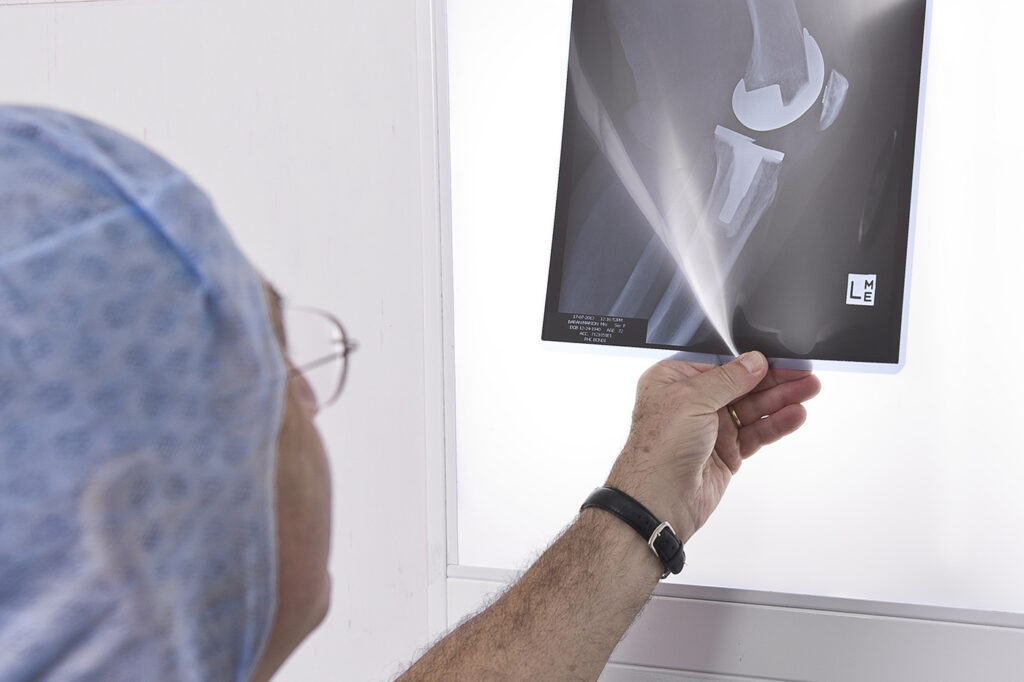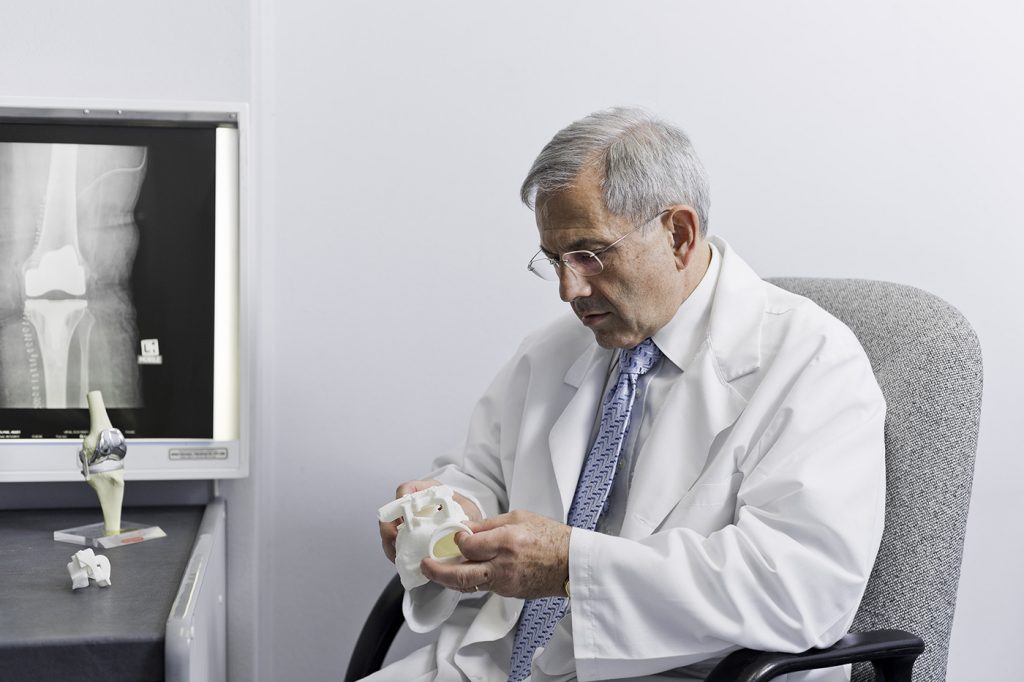
Partial Knee replacement is considered ‘retread’ surgery. This means the diseased bone is resurfaced only, leaving the rest of the joint untouched. The device is small consisting of metal and plastic components and the operation itself is less invasive.
The main advantages of a successful partial knee replacement procedure are:

A partial knee replacement implant is much smaller than a total knee replacement implant and does not disturb the healthy tissues of your knee. Most implants are metal-on-plastic and resurfaced with a cobalt chrome implant that conforms precisely to the anatomy of the knee. The tibial component would be made of polyethylene and only require minimal bone removal to secure the implant.
If only a single compartment in your knee is to be replaced, Professor Kohan will use a unicondylar (UNI) fixed bearing knee implant, the most commonly used prosthesis, or a unicondylar mobile bearing knee implant. The advantage of these types of implants are such that only the arthritic portion of your knee to be covered by the implant needs to be removed.
In joints with mobile bearings, the plastic spacer isn’t fixed but allowed to move back and forth with the action of the joint. Many believe that this allows greater freedom of movement in the joint and also reduces the amount of wear that could take place. Traditional partial knee replacements however retain good movement even in joints with fixed bearings and demonstrate a limited history of wear.
If osteoarthritis has progressed to more than one compartment of your knee we now have the ability to remove two (bicompartmental) or even three (tricompartmental) components of your knee joint and replace them with partial knee implants.
The advantage of a partial knee replacement rather than a total knee replacement is less damage to healthy ligaments during the procedure and the likelihood that your repaired knee will function and feel more like your natural knee.
Partial Knee Replacement surgery requires resurfacing of the damaged surfaces of the knee joint. A partial artificial knee joint is designed to fit over the edges of the damaged joint and to replace the damaged areas with one that can be used pain free.
The procedure is usually performed on an outpatient basis (no overnight hospital stay required). Discharge from hospital (as long as you feel well enough) will be 4 – 6 hours after surgery.
The operation will take approximately 1.5hrs plus approximately 45 minutes to an hour in recovery. You will be out of bed and walking 2 – 3 hours after surgery.
The incision is approximately 10cms and is made down the middle of your knee over the top of your kneecap. The scar line may not be completely flat immediately after surgery but will settle down after a few weeks. A tourniquet is placed around your thigh during surgery; this may cause bruising from your thigh down into your foot.
When you wake up, you will have a drain in your knee. This will be removed before you go home. A knee brace will be in place for 48 hours after your operation.
The operation will be performed under general anesthesia. Dr D Kerr will discuss the anesthetic and pain control with you. It is important you make an appointment to see Dr Kerr approximately 1 week prior to your operation.
There are two main techniques in partial Knee replacement surgery; the Repicci Method and the Oxford Method.
Walking
Upon discharge from hospital you will be walking with crutches. You may discontinue using crutches after being assessed by Professor Kohan at your postoperative visit. After this time you may use a cane or if you feel confident you may discontinue using any walking aids at all.
For the first 2 weeks following your procedure you may go up and down stairs as needed but only straight legged. After this time there should be enough flexibility and repair from the muscles around your knee to walk relatively normally.
Expectations
Each individual has his/her own set of expectations. Each patient is treated as an individual with general health, age and attitude considered.
An important thing to remember is that you are not sick. You have a problem with your knee that needs to be fixed.
Getting back on your feet after surgery is the most important goal. ‘Motion is Lotion.’
Generally our ‘Estimate of Fees’ is accurate however, on occasion unforeseen circumstances can arise during the operation which may require additional medical services or a different, more costly prosthetic device to be used. If this happens there may be additional costs to you that are not covered by the estimate.
This will be fully explained to you after the operation should it occur.
Professor Kohan’s Surgical Fees
Medical Item No: 49518
Surgical Assistant Fees
The surgical assistant fees will either be billed to you directly or Professor Kohan will bill you on his behalf.
Medicare Item No: 51303
Anesthetic Fees
You will meet with Dr Kerr, the anesthetist before your operation so that you can obtain an estimate of his fees. These will be billed to you directly.
Medical Item No’s : 17620, 17690, 21214, 23111, 22045, 18225
There will be 2 ‘no charge’ consultations after your Total Hip Replacement procedure.
Aftercare appointments with Professor Kohan following your procedure include:
7 Days Post Surgery – This appointment is in order to check the skin cut & for Professor Kohan to asses your overall recovery.
14 Days Post Surgery – At this appointment the skin clips will be removed. An ultrasound will also be done by our radiographer in the rooms in order for Professor Kohan to check for blood clots.
6 Weeks Post Surgery – At this appointment Professor Kohan will asses the X-ray and monitor your overall recovery.
Consultations after this time attract a fee which is reimbursed in part from Medicare.
These fees should be discussed with the hospital directly. Please be sure to check with your health fund regarding a gap or out of pocket expenses.
If you are privately insured the prosthesis used in a Total Knee Replacement procedure is usually fully covered by your Health fund.
These fees are payable directly to the sonographer.

Dr. Farah’s specialty interests are hip and knee surgery, hip and knee arthroplasty (joint replacement), anterior minimally invasive hip replacement and sports knee surgery.